If you are a Greek mythology buff, or just enjoyed Disney’s Hercules, you are all too familiar with the hydra.
Every time a head was cut off of this fierce mythical beast, two more would grow in its place.
What does this have to do with your aquarium?
Well, there is an aquarium pest that shares the same name. And, as you will learn, it’s equally ferocious.
In fact, this might be one of the strangest creatures that will ever enter your aquarium.
Today, I am going to teach you all about hydra and how to get rid of it before it harms your fish.
Contents
What is a hydra? (And how to identify it!)
A hydra, sometimes referred to as a freshwater polyp, is a small, jellyfish-like creature. And at first glance, a simple one at that.
Measuring just millimeters, the hydra is made up of a tube-like body, half-a-dozen tentacles on top and a sticky foot to hold it in place.[1]
Typically, hydras are a brown, green or off-white in color – although you might need a magnifying glass to tell. These things are small!
The easiest way to identify hydra is to touch it. Don’t worry, it won’t hurt you.
You see, hydra flinch and curl into a ball when threatened. Touching them stimulates this response.
While hydras are typically found in freshwater tanks, there are marine variants (Aiptasia), and they are just as deadly…
Saltwater or freshwater… no aquarium is safe from hydras!
One or two hydras are like ninjas. If they set themselves up on a plant of a similar color, they can easily be missed.
I usually first notice a hydra outbreak when they cling to the glass or a black surface, where their color and odd shape makes them stand out. Unfortunately, hydras are happy to cling to almost any surface in your aquarium – plants, wood, rock or even your sponge filter.
While they may be hard to spot at first, you will soon know if you have hydra problem because these things multiply… Quickly!
In fact, if you find one hydra in your tank, you can bet that you will soon see more. You see, hydras reproduce by budding.
You see that branch at the base of the hydra?
Well, that’s actually a bud. And once it gets big enough, it will break off into another hydra. And, this new hydra is also capable of budding.
No wonder these things spread so quickly – what starts off as a single hydra can soon become hundreds.
And, they can move!
While hydra often stay in one spot, don’t be surprised if you see them roam around your tank to find a better location.
They will do this in one of two ways…
1. Using their tentacles and suction-cup like foot to inchworm or somersault across a surface, allows the hydra to move almost 10 inches in a day.[2]
2. For longer distances, hydras release their suction-cup like grip on the surface below and allow the current to take them to new location in the aquarium.
Despite being able to move, hydra do not “hunt” your fish. Instead, they wait for prey to venture too close before attacking with their tenticles.
And, it’s these tentacles that make hydra so dangerous.
Especially to small fish.
The stinging tentacles that dance back and forth in the water pack a deadly wallop – allowing a hydra to kill fish many times its size.
Below, you see a hydra eating a baby minnow that it killed with its venom.…
As you can imagine, these things are the scourge of fry tanks. Baby shrimp, fry and other small fish are the perfect meal and don’t stand a chance if they come near the hydra’s toxic tentacles.
If you feed your fish live food, then hydra can also be a problem since when you feed your fish, you are also feeding the hydra – encouraging their growth. Live foods, like daphnia, are a tasty meal to a hydra.
If you have larger fish, then you don’t have to worry about hydra at all – they are a small fish predator only. To a big fish, those tentacles won’t even tickle.
Oh, and just when you thought this tiny terror couldn’t get any more strange…
Scientists have discovered that the hydra doesn’t age – leading some to believe that it could unlock the secret to humans living forever.[3]
While this creature might be the most interesting thing in your tank, you want it gone – for the sake of your fish.
How do hydra get inside your tank?
It feels like hydra just appear out of nowhere, right?
Don’t worry, I can assure you that isn’t the case.
So, where do hydra come from?
Well, it turns out they had a little help from you.
Like snails, hydras sneak into your tank by hitchhiking. Hydras are expert stowaways and are virtually unnoticeable on new plants that you add to your tank.
Hydra can also sneak into your aquarium along with water from a fish bag. When hydra withdraw their tentacles and close up, they look like a floating piece of sand.
Pre-treating your plants can help prevent hydra from appearing in your aquarium.[4]
But even if you take the utmost care, you shouldn’t be too surprised to experience a hydra infestation in your aquarium – they are darn resilient.
If it’s too late to prevent hydra, then there is just one thing left to do. Get rid of them…
How do you get rid of hydra?
So, you want your hydra bloom gone, and you want it gone now?
Say no more. Below I list three methods of killing hydra that actually work.
1. Manual removal
If you notice just a few hydras on the glass of your aquarium, you can remove them manually. Carefully wiping with a sponge easily removes a small patch of hydra from a smooth surface.
But be particularly careful that you do not leave any pieces behind…
Because if you cut a hydra in half, it can grow into two separate hydras. That’s right, any small piece of hydra can grow into a new hydra.
Manual removal can be difficult if your hydra infestation is covering an irregular surface, such as plants or rocks. And if you have a large hydra population, then it’s time to call in the big guns….
2. Chemical removal
To be honest, this is my preferred method of removing hydra. Over just a few days, the hydras in your tank will begin to wither and die.
And to do the job, I keep a pack of this near my tank at all times…
Ignore the name, this stuff will not only kill planaria but also any scutariella and hydra.
I was introduced to this product by a fish store in Japan, who used it as a shrimp-friendly hydra remover. This product is one of the best-kept secrets in fish keeping – why we don’t have a dedicated supplier in the United States is beyond me.
The secret ingredient in Planaria Zero is betel nut extract – a natural hydra killer. From all accounts, it’s a much safer alternative to other hydra-killing chemicals. Much safer for your tank than Panacur C and other doses of Fenbendazole.
Designed to be friendly for shrimp, using Planaria Zero is incredibly simple. My only gripe is that the instructions are in Japanese, and to make it even more confusing, there seem to be two sets of instructions floating around the internet.
Here’s what worked for me…
- Day 1 – add 1 spoon per 6 gallons of water in your aquarium
- Day 3 – add 1 spoon per 6 gallons of water
- Day 4 – perform a 20% water change
- Day 10 – add 1 spoon per 6 gallons of water
- Day 11 – perform a 20% water change
Just use the spoon included in the package and add the powder directly to the tank.
More often than not, I find that all the hydra die before the second dose.
Remove any carbon filters (or Purigen) during dosing because this can remove the Planaria Zero from the water before it has a chance to work its magic. I also make sure that I have plenty of surface agitation during treatment.
Oh, and be sure to remove any snails you want to keep. This magical white power can be lethal to those too! Malaysian trumpets and Nerite snails, in particular, seem to be affected.
Once done dosing, return your carbon filter to remove any remaining traces of Planaria Zero from the water.
3. Hydra predators
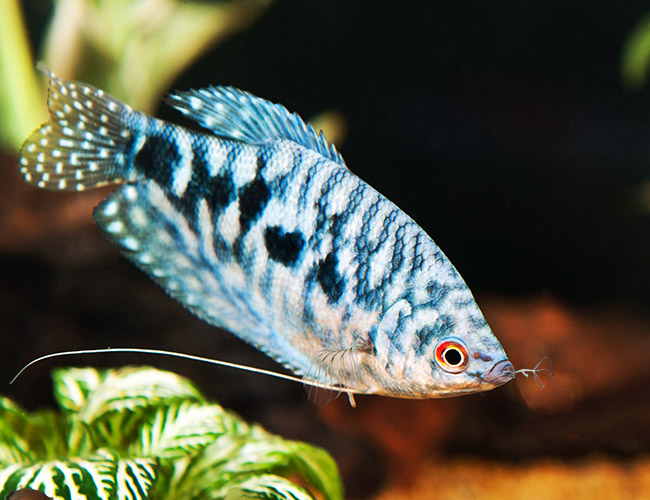
Another popular option for beating hydra is to add a hungry fish.
Without any effort on your part, these fish happily hunt down hydra. Your fish gets a tasty meal, and you get rid of your hydra invasion!
Which fish?
- Blue Gouramis
- Mollies
- Paradise fish
…Are only a few of the fish that have been known to feast on hydra.
Not feeling the fish? Pond snails will also happily seek out and destroy any hydra inhabiting your tank.
Just be mindful that once your hydra population is gone, this fish is another mouth to feed. So, make sure you have the right type of fish food on hand to keep your new addition happy and healthy.
Conclusion
As you see, hydra is a nasty little critter that you don’t want hanging around your aquarium.
It might surprise you to learn that some fish keepers voluntarily allow hydra to call their aquarium home. In these cases, the tank holds larger fish that are unaffected by the toxicity of hydra.
But for the most part, hydra are considered a pest and should be removed before they have a chance to grow in number.
Fortunately, while hydra might be difficult to prevent, they are easy enough to get rid of using the instructions in this guide!
How did you get rid of hydra in your aquarium? Let me know in the comments below!

Ian Sterling, founder of Fishlab.com, began his aquarium journey over 30 years ago, driven by a deep fascination for fish and their diverse personalities. His website, Fishlab.com, is dedicated to making fishkeeping accessible and enjoyable, offering beginner-friendly guidance, expert insights, and a community for aquarists to connect and share experiences.


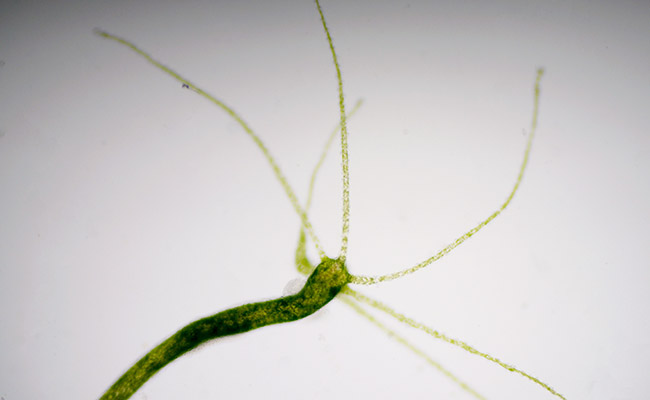
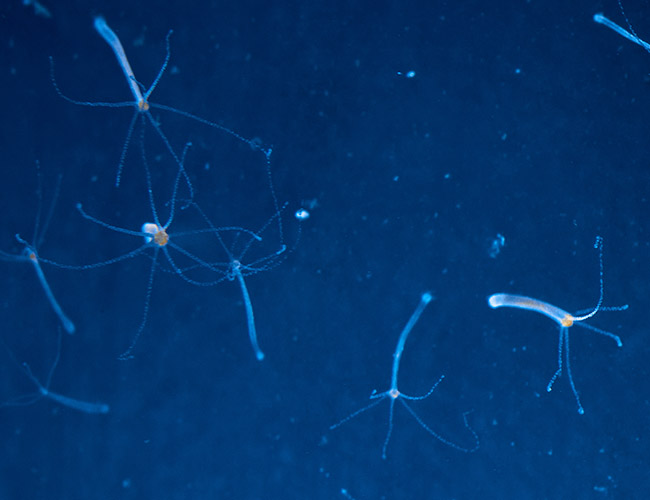
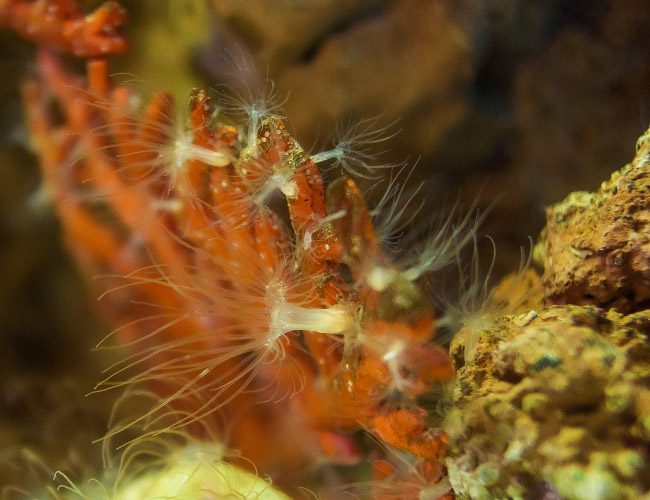
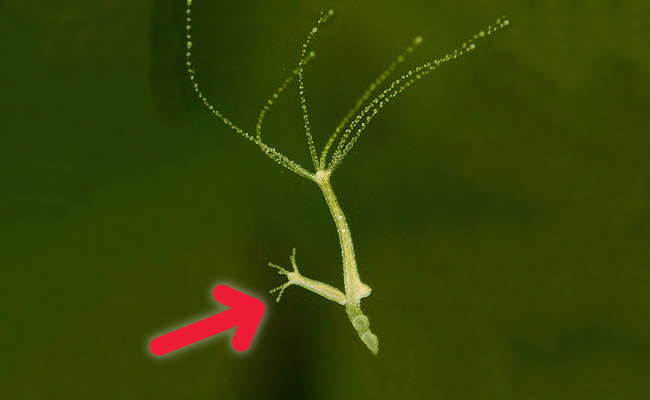
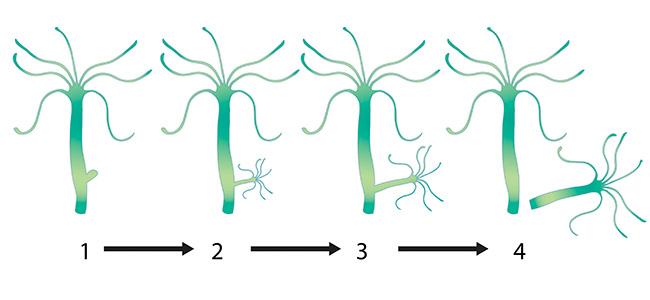
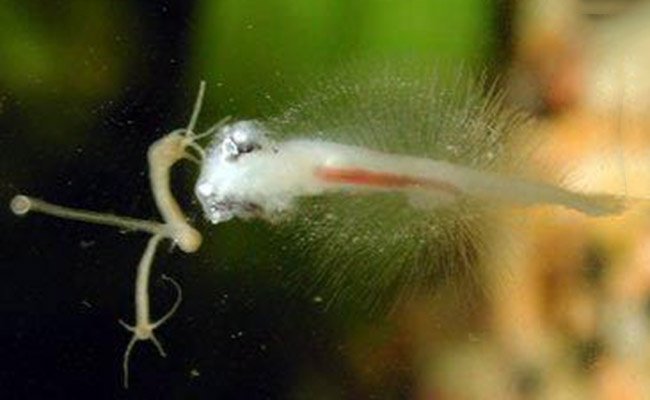
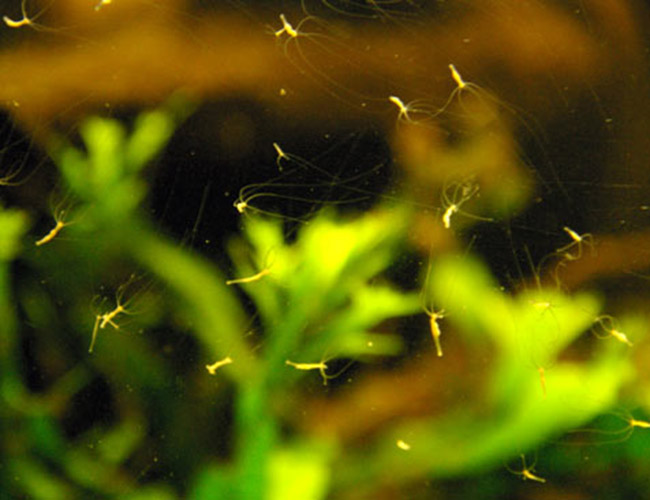
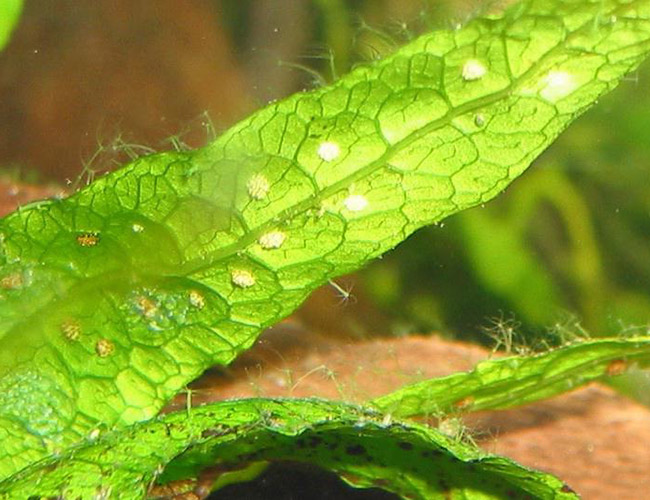
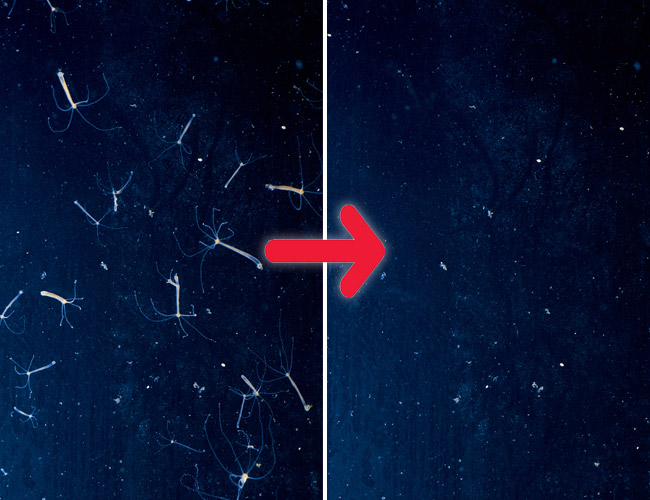
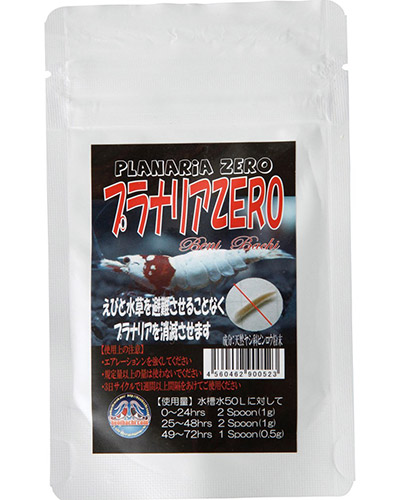
Comments (41)
Great article! I was struggling to get rid of this menace for weeks. Happy to report that your recommendation really worked. Gone in just a few days. Who would believe it was that simple? Thanks!
Hi Bunny,
I am glad you found success!
Can Hydra Harm Pleco And Fishes Having Same Size As Molly Or Guppy?
Hi Db,
A hydra might give a fish these size a tiny sting, but they are generally more harmful to fry and other tiny critters that inhabit your tank.
What about emperor tetras?
Hi Dan,
Any fish over .3 inches should be safe. This is about the size of a newly born guppy. Most adult fish are safe, although they may get a nasty sting if they get to close to the tentacles, it shouldn’t kill them.
Is this safe to use with african dwarf frogs in the tank? I’ve purchased this product, but I’m fearful of how to help my tank with the ADF’s. Any help is greatly appreciated. I have searched and I cannot find any helpful articles.
Hi BT,
Unfortunately I have no experience using this product with ADF’s.
I just got a load of pond snails so hopefully I’ll start seeing a decline in hydra. I can’t get a good photo of my fish without the hydra making it look like the glass is dirty. Will they harm khuli loaches?
Hi Victoria,
Hydra won’t harm a fish as large as a Khuli Loach.
They are in my pond snail tank… any other options? Will they eat the baby snails?
Hi Nicki,
If the snails are small enough, a hydra will happily sting and kill them with their tentacles. Most hydra treatments will also kills snails, fenbendazole (Pancur C) can also kill some types of snails. I cannot guarentee it won’t kill yours. In this instance, I believe your best option is to remove the snails and treat the tank.
Good info.
Will Planaria Zero kill my beneficial bacteria?
Hi Judy,
I have personally used this and know many other people who use it too. I have never observed or heard of beneficial dying as a result of dosing to the instructions.
On a scale from one to ten which fish are the best for getting rid of them my fish recently has been pregnant and hydra ate 3 of the baby’s which fish would you recommend the most
Hi Natalie,
All fish listed can eat hydra. The problem is that even though a type of fish shout feed on hydra, there is no guarantee that they will. Like you and I, some fish have their own funny eating habits.
After I treat my tank with this product when can I put my snails back in the tank after treatment
Hi DeLana,
I asked my friend who keeps snails this one and he does 3-4 50% water changes and gives the tank a good gravel vacuum and wipe down before returning them.
So this powder doesnt kill any other plants besides the hydra?
Hi Jessie,
Hydra aren’t actually a plant, they are actually an invertebrate, I guess you could call it an animal.
I have seen this used in many planted tanks without any effect on plants. Are there sensitive plants that may respond negatively to betal nut powder? Possibly. But I have not come across them yet.
Hi Ian,
I keep my aquarium very clean and do everything possible to ensure that no hydra are transported into the aquarium by hitching a ride with the fish, however I do feed my fish brine shrimp and am wondering if it’s possible that the hydra are coming in cyst form with the brine shrimp cysts. I do bleach treatment on the brine cysts before hatching to reduce the Hydra presence, but I am curious if this Planaria Zero would kill brine shrimp or affect other species such as daphnia, mysid shrimp, or other young fry?
Thanks for your insight.
Hi David,
It sounds like you run a tight ship. Even so, it only takes a single hydra to slip past and an infestation can quickly establish. While planaria zero is certainly shrimp safe, having tested it myself, I am unsure as to what affect it would have on brine shrimp, if any.
As for young fry, I can only speak second hand. Anecdotally, a member of my fish club claims to have used it in a cichlid tank. However, cichlids are mouthbrooders so it’s possible that this could have influenced the result… It’s hard to say. I wish I could provide you with more insight here.
Does no planarian kill daphnia?
Hi Squid,
Unfortunately, I can’t answer this one, I’ve never tested it on daphnia. Any daphnia in my tanks get gobbled up quickly.
I have a koi fry tank with small snails. I bought the panacur, would you order this and wait for it to come in or use the safe-guard? Either way, I have to remove the snails?
Hi Gayle,
If they are not pest snails that you want to rid yourself of, then I would advise removing them from the tank.
Ya know, I knew I could count on you! I’ve been all over the web and can’t find good information on when to return snails after treating a tank for hydra. And while I did buy panacur, I’ve hesitated to use it because some sites say it sinks into the substrate and is hard to get rid of keeping a tank unsafe for snails and shrimp. So now I’m going to get No Planaria. I was thinking about soaking all new plants in panacur for a couple days, then rinsing really well before adding to my tanks. What are your thoughts on this? Or would using No Planaria on new plants be a better way to go? BTW, my ammonia problem is clearing up. Couldn’t have done it without you. I’m getting myself a 55G for Christmas this year. I’m thinking of using 2 HOB filters and 2 heaters. Do you think this is a good idea or overkill? Deborah
Hi Again Deborah,
That’s awesome to hear your ammonia is clearing up. On the filter side, two HOB’s typically are not needed, although more filtration is better, most people would just size up to a larger HOB. Be mindful that any HOB you add is going to add to the surface agitation. If you keep fish that prefer slower moving to no current, you may have to reduce the flow.
My preferred way to do things is with two heaters. Let’s say my tank needs a 200W heater. I’ll buy 2 x 100W heaters. This way, if one gets stuck on, it won’t heat to the point where it will cook my fish. Similarly, if it fails, the other heater will stop the water from getting to cold.
For your plants, an old fashioned bleach dip or potasium permagnate can get rid of hithikers. Panacur and No Planaria (or any betal nut variant) are used in the tank because they are typically fish safe. They are typically not used when introducing newly bought plants to a tank.
I am a Biology teacher, and I actually use both Hydra and Planaria in some of the lab experiments I do with my students. Instead of always buying new Hydra and Planaria, I am now trying to keep my own. Since you know so much about how to kill them, what advice do you have for keeping them alive and well? So far, I am simply trying to do the opposite of what you advise in this post haha Thank you!
Hi Jordana,
Unfortunately, it’s my life-long mission to eradicate these creepy little things. I do not have any experience in keeping them alive
Hi
I had small hydra infestation on everything in my tank. I kept scrubbing off those little pests but they kept coming and coming. I put few baby plecos and they seem to have got rid of hydra.
Hi Sprinkle,
Thanks for sharing your hands-free way of getting rid of hydra.
Can a hydra be plucked by forceps and removed….. I found one attaching to my val leaf……
Hi Nagarajan,
You risk breaking the hydra into smaller pieces, which can lead to it growing back. Manual removal isn’t advised.
I remember watching my relatively new freshwater aquarium closely and seeing these guys waving off the tips of my plastic grass. I thought they were fascinating and assumed they were some kind of small plant, algae or fungus. There was a small minnow in the tank and some feeder fish. I tried looking up what they were to no success and eventually they disappeared. I must’ve cleaned them off at some point accidentally or my minnows found them tasty. Now I know!
Hi Evan,
They certainly are interesting little critters to look at. Now you’ll know what they are if they pop up again!
Ian,
I hope you are well.
I am a little worried, I have some sort of infestation in my largest tank, 20G. They look like tiny white mites crawling around on the glass. It looks like there is some kind of worm as well. Thank god I have pretty good eyesight still, lol, and with the naked eye it does not look like planaria. Everything I am looking at is so small. I have never seen water flees or worms or any other small life like this in any of my tanks.
I did notice a bunch of algae growing on my java moss last week. Then as of this week it is nearly completely gone, without any treatment. So, I assume the algae fueled the outbreak of whatever has exploded in my tank. If I had to describe the little creatures they almost look like head lice, but they are very mobile like little mites.
One, do you have any experience with something like this? Two, are they harmful, I don’t really notice my bettas eating or feeding on them. Will they die out or find a balance as their food source is limited?
I have two 10G tanks that look as though they may have the same organisms to a much smaller extent and I have a 5 gallon with only RCS and I do see signs of these creatures in there, but not to the level as my other three tanks. I believe the infestation started with plants, guppy grass, included with my shrimp I bought from another hobbyist.
This makes me mad because I would expect someone to say if they have organisms like this in their tank, before selling you livestock.
What thoughts do you have? should I be concerned? I have not seen any change in my fishes’ behavior, yet.
Thank you Sir,
D.D.
PS – all my betta fish are well (six girls and one boy), Lucky’s tail is now fully healed and she is excellent.
Hi again DD,
Sorry for the delayed reply, been having an issue on theb ackend where comments were not showing up.
On the white mites, could they be seed shrimp? If they are, they are nothing to worry about – many fish will gladly eat them as a snack.
On the worm, is it a detritus worm? Google image search both of these to confirm – they should be nothing to worry about again, fish love to eat these.
They generally multiply in numbers when there is something to eat in the tank. It could be rotting plants, uneaten fishfood etc. They will dwindle and die out on their own (or reach an equilibrium) once the food source is taken care of.
On the algae side, this too needs a food source.Some types, like brown algae and “biofilm” will come and go once a food source has exhausted itself. The solution is typically dealing with the cause rather than battling the algae itself.
If they came in as hitchhikers, it’s common to do a bleach dip or h202 dip before adding plants to a tank. Unfortunately, this is the state of the hobby. While you have good eyesight, it’s possible the seller only has one or two in his tank and didn’t notice. Unfortunately, I have been guilty of this myself before at a swap meet, even though it was never my intention – I just missed it. I guess what I’m trying to say is that these things do happen and, fortunately, the hitchhikers are typically harmless.
If you google and everything looks like the above, then there is nothing to be concerned about. Also, I’m happy to hear all the tanks are up and your betta family have settled in, and especially happy to hear that Lucky made a full recovery!
Hi Ian a great read I have a 400 liter tank set up and it has hydra in it , we have it set up with freshwater crayfish they are quite small in nz we call them koura , and small fish , will that treatment harm crustaceans?
Hi Dave,
That’s actually a good question, Unfortunately, I do not have any personal experience here. I have read from others in forums that it is crayfish safe but I cannot guarantee it. Crayfish are not particularly popular here in America due to their love of destroying all plants in the tank. They are like mini demolition units. Although I have to admit that the electric blue crayfish are absolutely stunning.
Hi Dan I have very small worms in my tank that swim like a snake in fact Icall them hair snakes do you know what they are? are they harmfull? I had hydras but my snalls seem to have taken care of them. thanks!